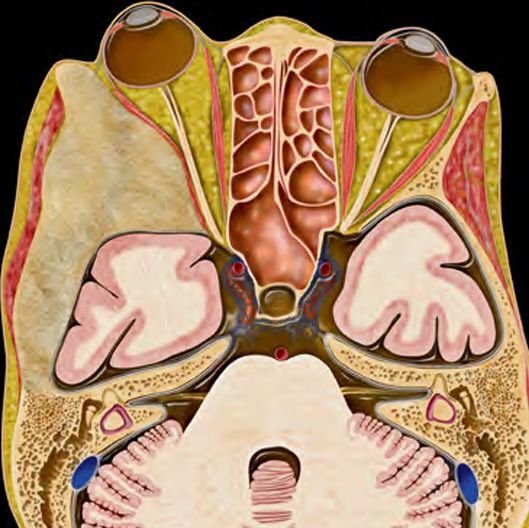Dermoid and Epidermoid Cyst
Dermoid and Epidermoid Cyst
Dermoid and epidermoid cysts of the scalp are among the most common benign congenital lesions seen in children. These cysts are usually harmless but may gradually grow over time, leading to cosmetic concerns, discomfort, and—in rare cases—infection or rupture. Surgical removal is often recommended for definitive treatment. In Bangladesh, many children suffer from undiagnosed or poorly managed scalp cysts due to limited access to pediatric neurosurgical care. At the Bangladesh Paediatric Neurocare Centre and National Institute of Neurosciences & Hospital (NINS), Dr. Md. Nafaur Rahman offers specialized evaluation and safe surgical treatment for pediatric patients, ensuring optimal cosmetic and neurological outcomes. What Are Dermoid and Epidermoid Cysts? Dermoid Cyst A congenital cyst that forms from trapped skin and skin structures (like hair follicles, sebaceous glands) during early fetal development Often found near the scalp midline (particularly the anterior fontanelle, glabella, or posterior occiput) May contain hair, oil, and keratin material Firm, non-tender, and mobile beneath the skin surface Epidermoid Cyst A benign cystic lesion lined with squamous epithelium and filled with keratin debris Generally lacks skin appendages like in dermoid cysts Slower-growing, sometimes deeper or connected to skull bone Often confused with lipomas or sebaceous cysts without proper imaging Common Locations in Pediatric Patients Scalp midline and paramidline areas Behind the ear or near the mastoid region Forehead or glabellar region Occipital region Midline lesions especially near the fontanelles or occiput should be evaluated for intracranial extension to rule out complications. Clinical Presentation Children may present with: A slowly growing lump on the scalp present since birth or early infancy Lump is painless, non-tender, and soft or firm in consistency In some cases, infection, redness, or discharge if the cyst ruptures Cosmetic concerns in visible areas like forehead or vertex Rarely, neurological symptoms if the lesion is connected to intracranial structures (more common in midline dermoids) Importance of Early Diagnosis in Bangladesh In Bangladesh, parents may delay seeking medical attention for scalp lumps due to lack of awareness or fear of surgery. However, timely diagnosis and intervention prevent complications such as: Infection and abscess formation Enlargement causing cosmetic deformity Intracranial extension in midline cysts Misdiagnosis as malignancy or trauma-related swelling Diagnostic Work-Up Physical Examination Detailed evaluation of the location, size, consistency, mobility, and any skin changes Check for transillumination, which may suggest cystic content Assess for midline location, which may warrant neuroimaging Imaging Ultrasound: Useful for superficial cysts; helps differentiate solid from cystic lesions CT Scan or MRI Brain: Recommended for midline or deep-seated lesions to rule out bone involvement or intracranial communication Treatment Options Surgical Excision Complete surgical removal is the definitive treatment Performed under general anesthesia in children Ensures permanent resolution and prevents recurrence Careful dissection to avoid cyst rupture during removal Intracranial extension, if present, managed with a combined neurosurgical approach Postoperative Care Discharge usually within 1–2 days Minimal scarring with cosmetically planned incisions Pathology confirmation to rule out rare malignant transformation Outcomes and Prognosis Excellent prognosis with minimal recurrence when completely excised Very low risk of complications in experienced pediatric neurosurgical hands High parent satisfaction due to cosmetic improvement and peace of mind Follow-up required for any signs of recurrence or incomplete removal Challenges in Bangladesh Context Misdiagnosis or neglect due to resemblance with harmless skin lumps Inadequate surgical expertise in peripheral areas Limited access to imaging and pediatric neurosurgical care Fear of surgery in infants or toddlers often leads to unnecessary delay Why Refer to Dr. Md. Nafaur Rahman? Specialized training and experience in managing pediatric scalp cysts, even with skull or brain involvement Use of modern microsurgical techniques for minimal scarring and complete removal Expertise in managing rare cases with intracranial extension Safe anesthesia and child-friendly care environments at NINS and Bangladesh Paediatric Neurocare Centre Affordable, ethical, and family-centered care for children across Bangladesh Contact for Consultation Dr. Md. Nafaur Rahman Assistant Professor, Pediatric Neurosurgery National Institute of Neurosciences & Hospital (NINS) Chief Consultant, Bangladesh Paediatric Neurocare Centre 📞 Serial & Appointment: 01912988182 | 01607033535 🌐 Website: www.neurosurgeonnafaur.com










